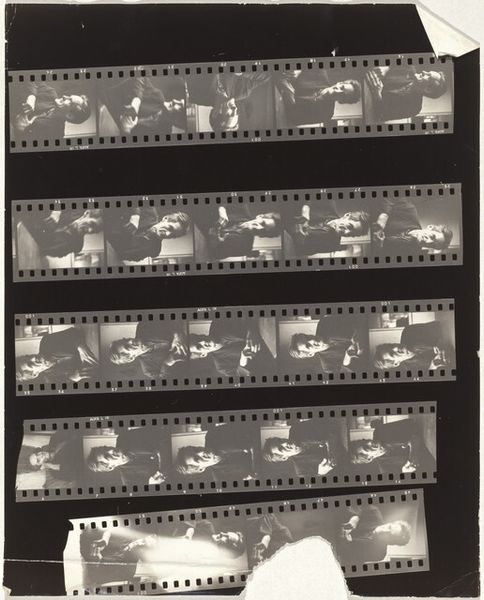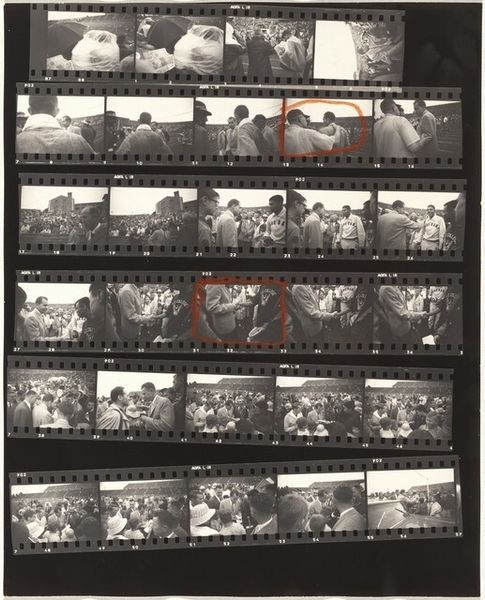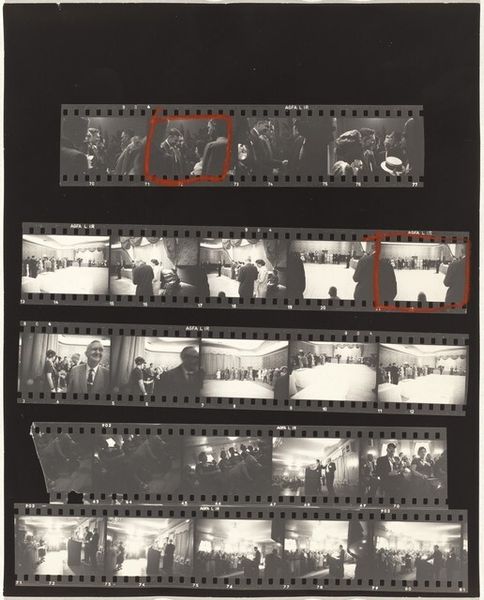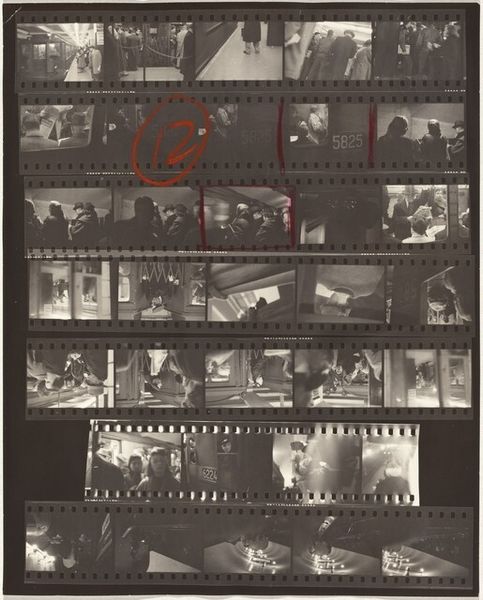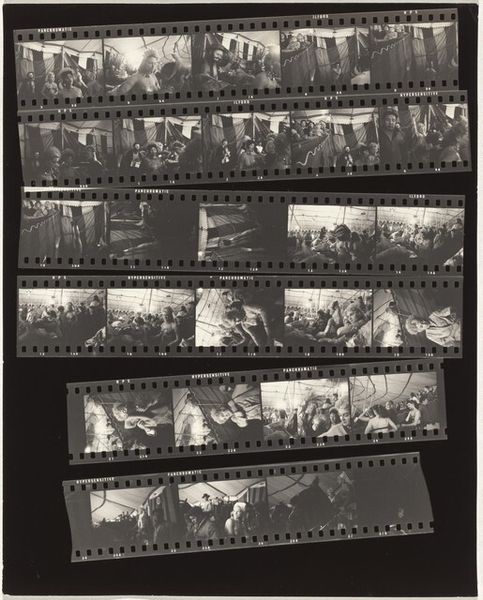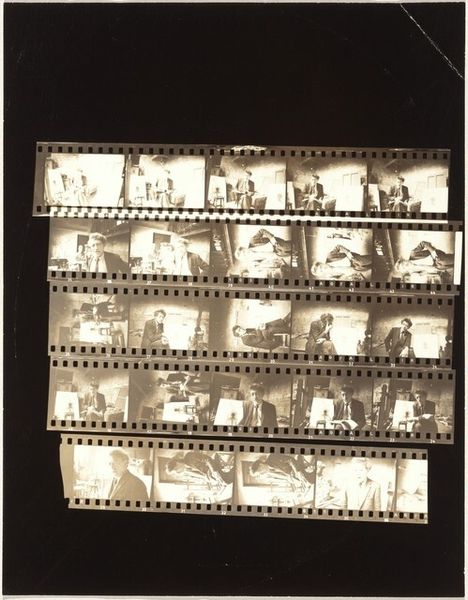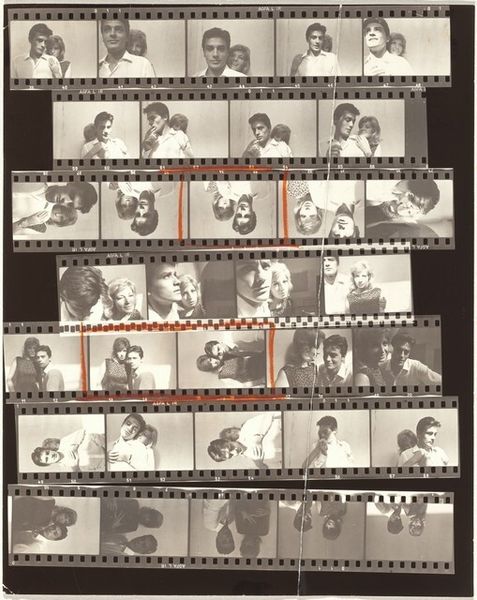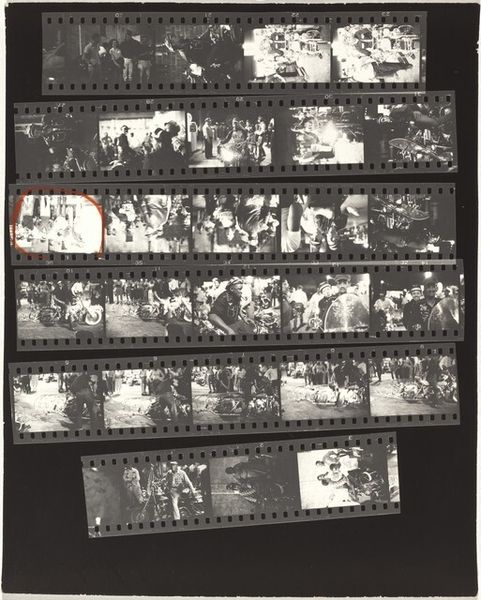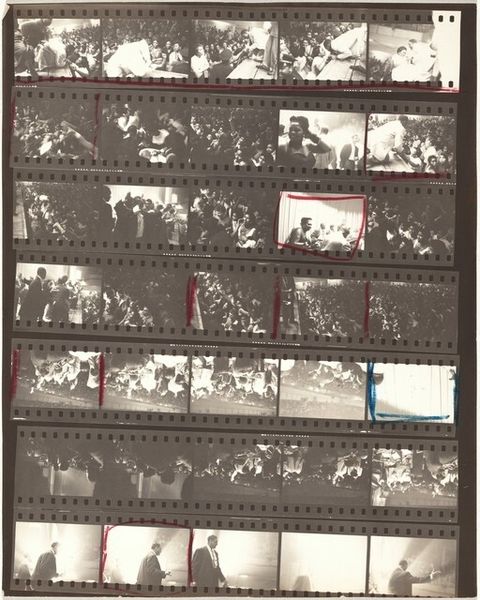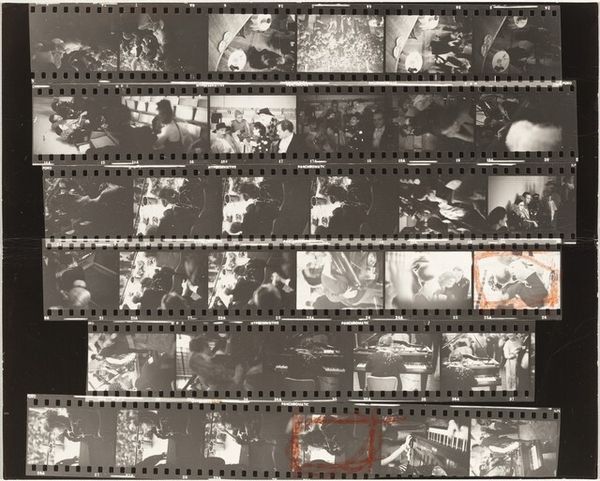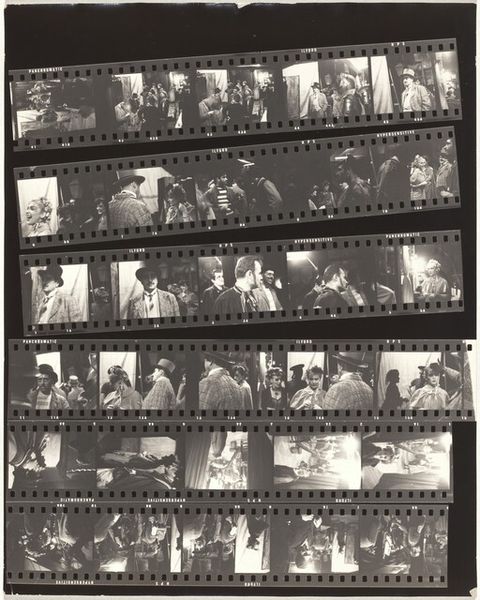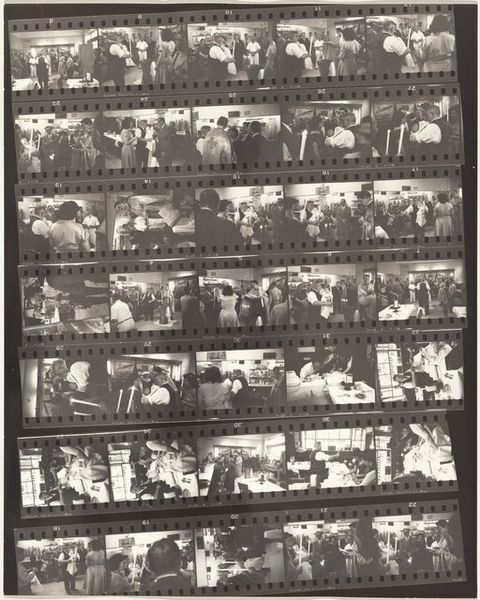
photography, gelatin-silver-print
#
portrait
#
wedding photograph
#
street-photography
#
photography
#
gelatin-silver-print
Dimensions: overall: 25.2 x 20.2 cm (9 15/16 x 7 15/16 in.)
Copyright: National Gallery of Art: CC0 1.0
Curator: Robert Frank's “Pablo and Andrea 2,” taken between 1957 and 1958, presents itself as a strip of gelatin silver prints—essentially, a sequence of moments captured on film. Editor: There's a raw energy to it. The haphazard arrangement of the filmstrip segments laid against the black background... it feels more like a discarded contact sheet than a carefully composed artwork. Curator: Indeed, the unfinished quality is part of its power. Frank’s photographs often captured everyday realities that others overlooked, contributing significantly to what is now known as street photography. This approach aligned with a broader social shift in postwar art. Editor: I notice the wedding vibe in these scenes of beach gatherings, kisses, and group celebrations. But even at joyful events like a wedding, you feel a hint of detachment. There is this melancholy tone despite the seemingly cheerful occasion. Do you think this is part of a critique? Curator: That detachment is classic Frank. It’s why he’s so often associated with the idea of existential alienation within seemingly ordinary settings. Consider also the use of light and shadow. These stark contrasts don’t merely document the scene; they reveal a deeper symbolic struggle between hope and disillusionment, innocence and experience. Editor: How much of his Jewish-Swiss identity plays a role in these images? Curator: Hugely significant! As an immigrant, Frank certainly felt like an outsider observing American culture from a different perspective. These cultural complexities influenced how he perceived rituals, behaviors, and celebrations of his contemporaries. Editor: The choice of black and white too – a choice loaded with symbolism! It lends a timeless, almost archetypal quality to this portrayal of love and community. Curator: I find myself questioning how Frank might view his legacy if he could observe the responses to this piece today, nearly 70 years after he created this body of work. Editor: Well, regardless, his distinctive approach reshaped photography's purpose, influencing countless subsequent artists who documented life with unfiltered realism.
Comments
No comments
Be the first to comment and join the conversation on the ultimate creative platform.

